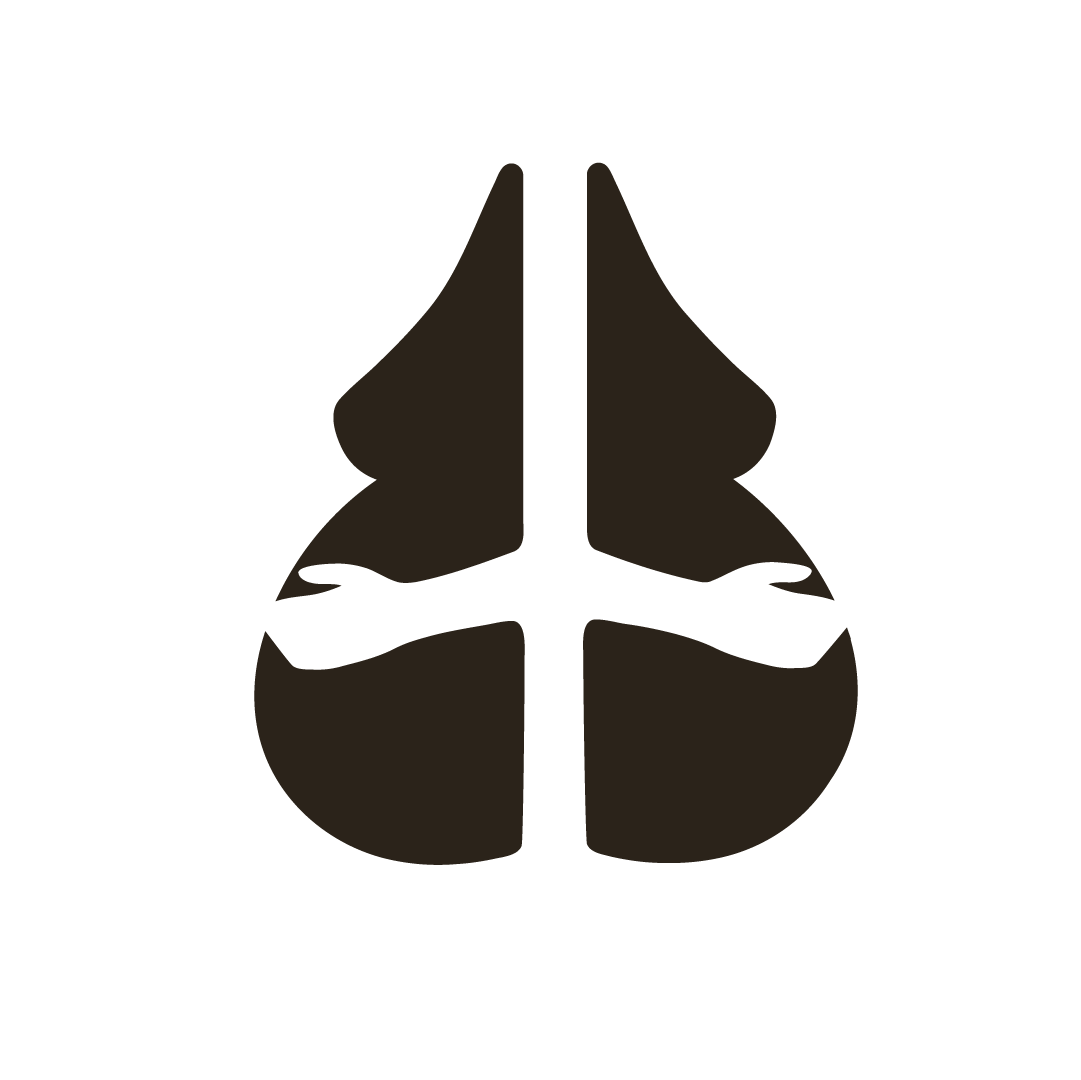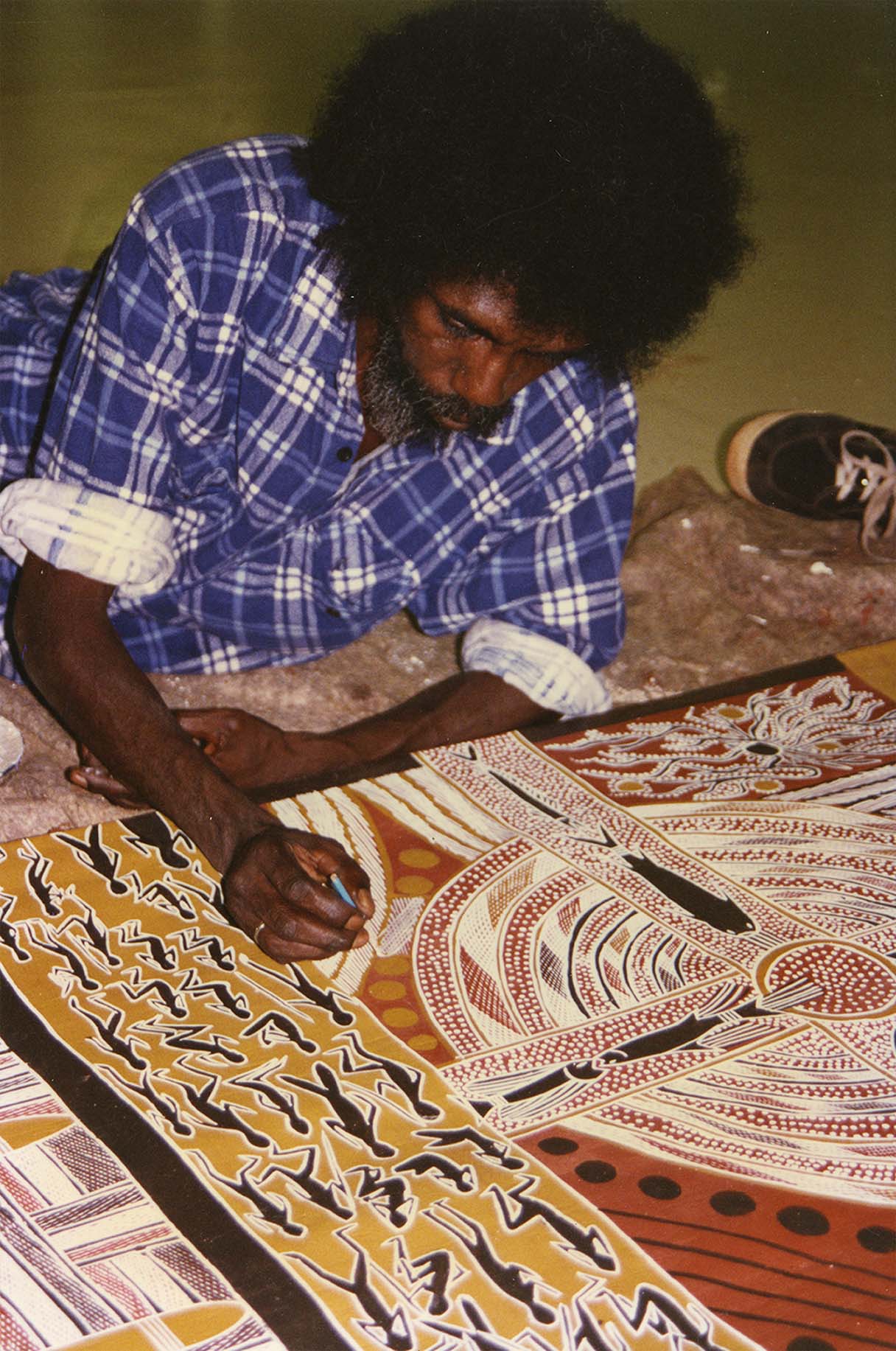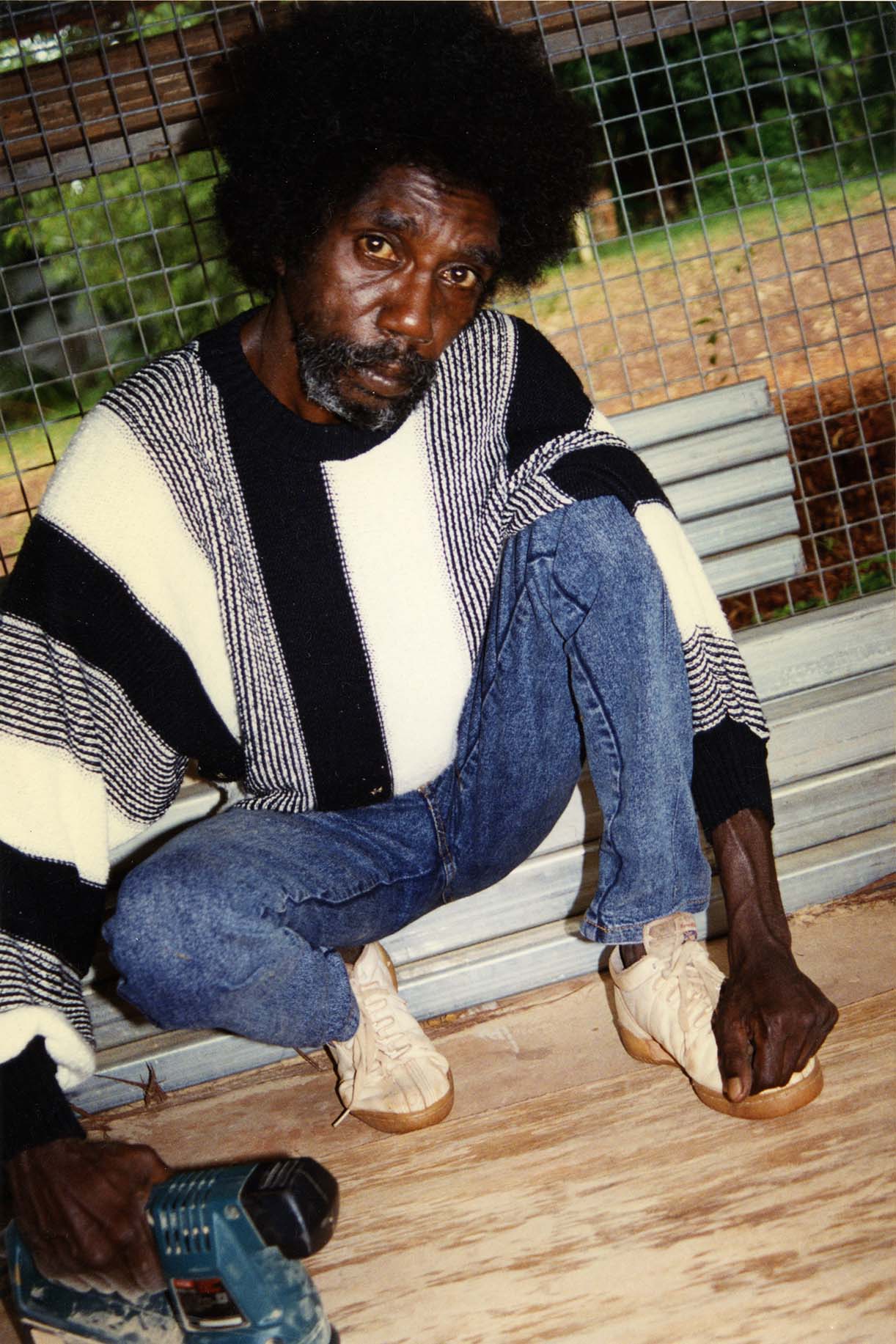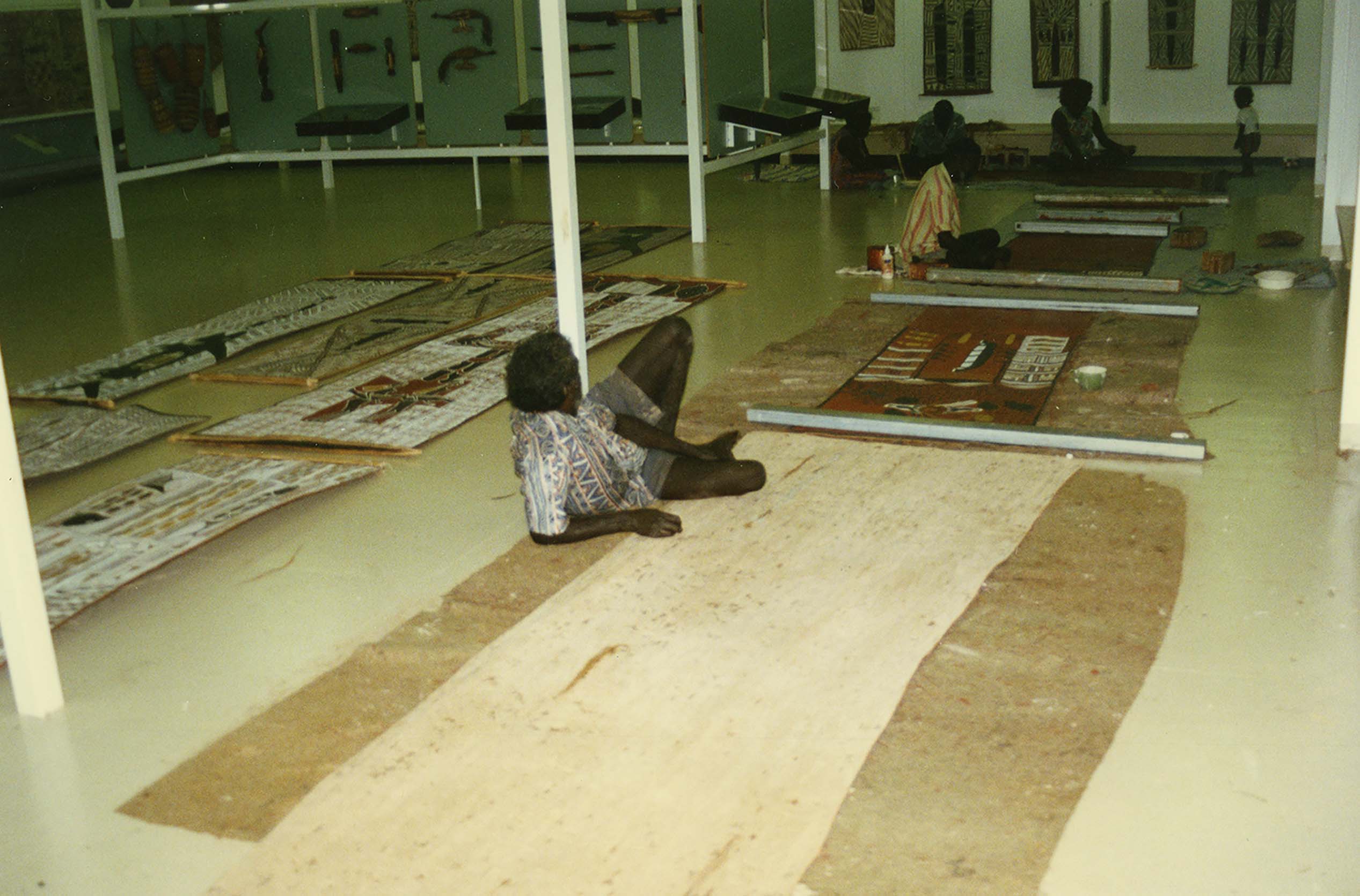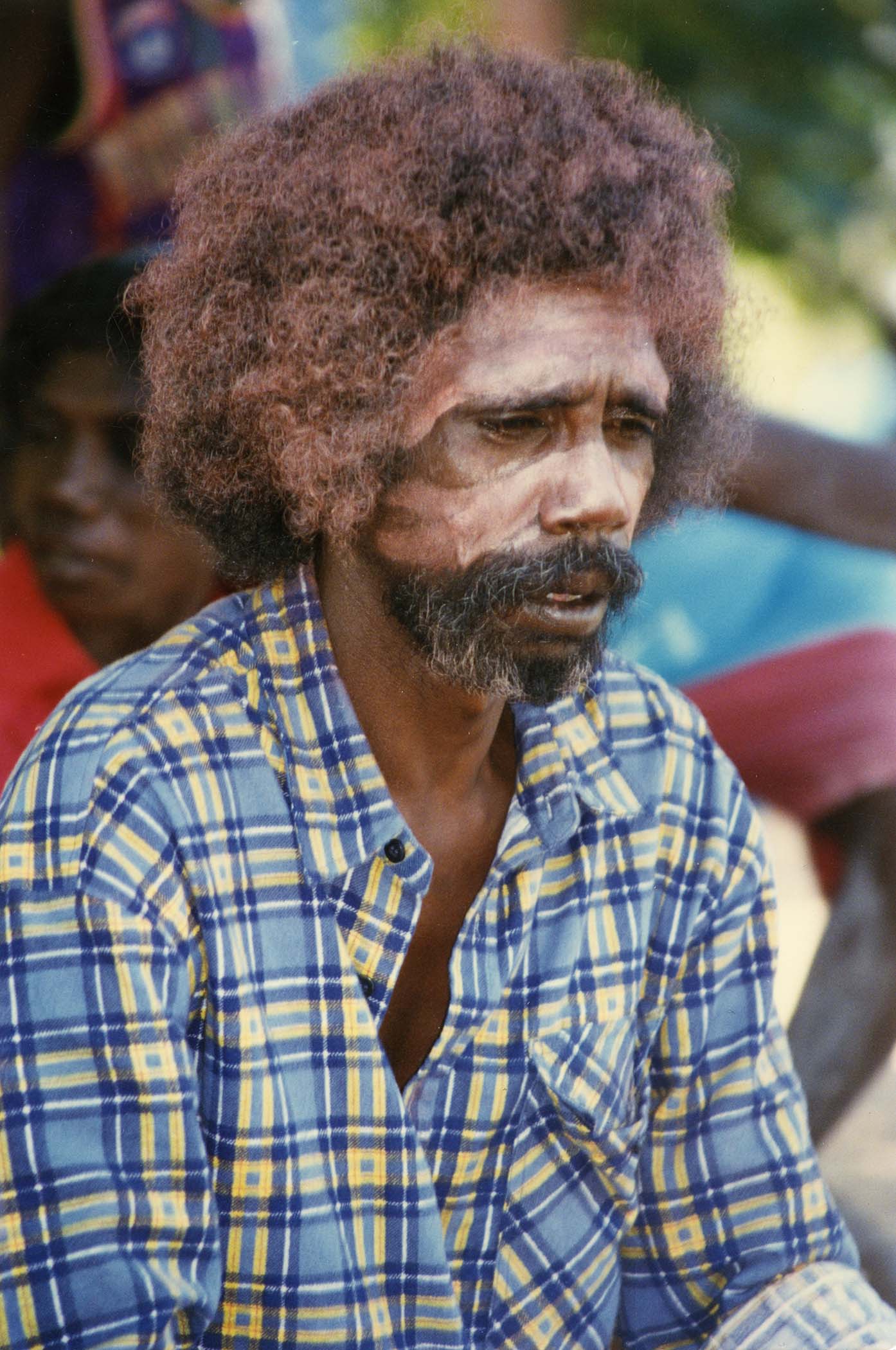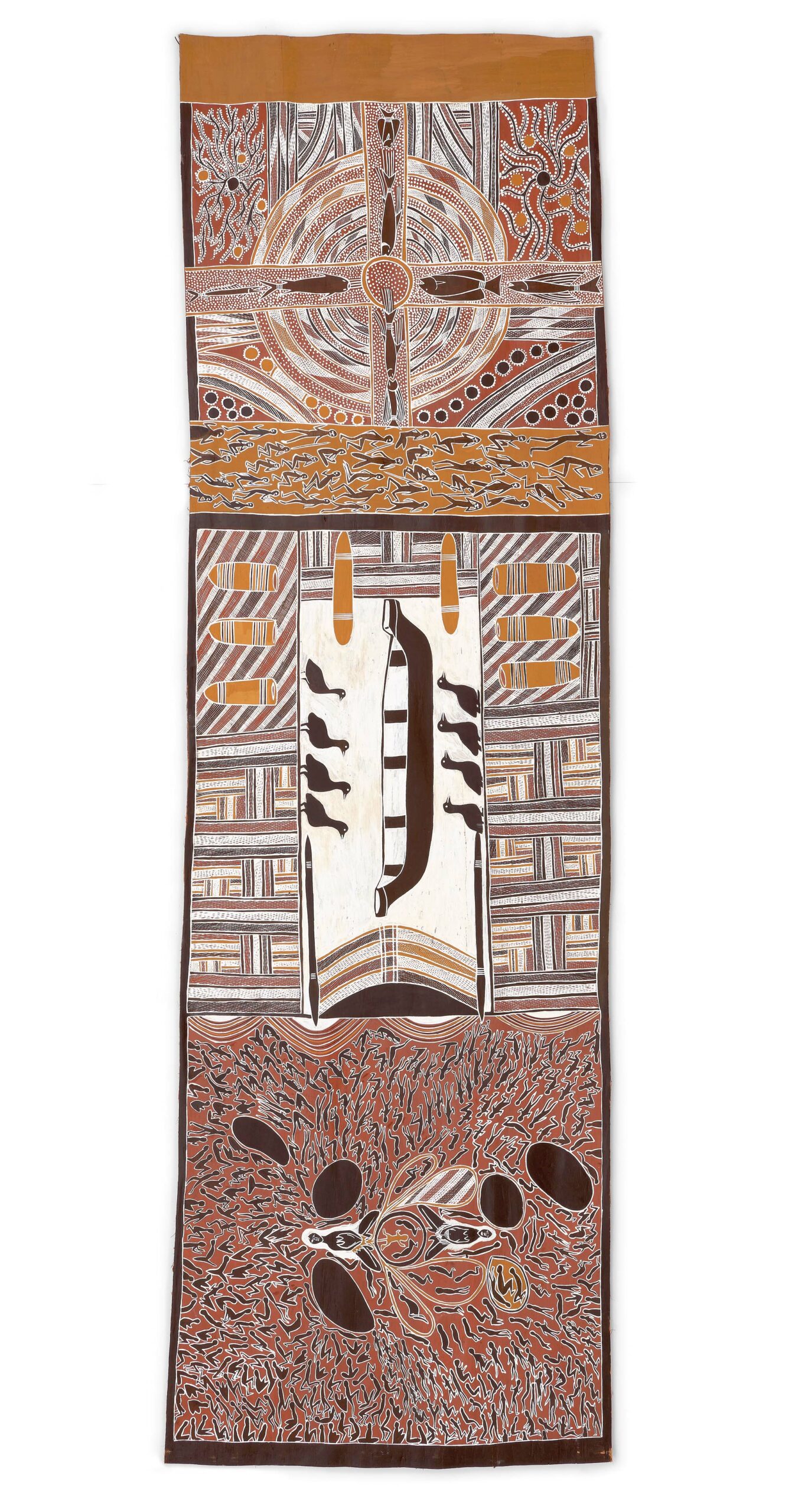
More Info
The names of the Djan’kawu were Maladatj and Bitjiwurrurru. They came on their canoe far from the east, and landed ashore at Yalaŋbara. There they gave birth to the people. The round objects in the paintings are the mats, which people lay upon. They left the sacred dilly bag at Yalaŋbara. The Djan’kawu named what they saw in the sea, such as catfish, dolphin, turtle, and moonfish, and what they saw on the mainland. Also depicted in the painting are two paddles which turned into the walking stick called Mawalan. The sisters walked with their mawalan with their white hair hanging down to their knees. On the far end of the painting, Milŋurr represents wisdom and the four corners of the earth.
– Buku-Larrŋgay Mulka Centre
Additional Information
Decade
1996
Medium
Natural pigments on eucalyptus bark
Dimensions (IN)
110 ¾ x 34 3/8
Dimensions (CM)
281.31 x 87.31
Credit
Kluge-Ruhe Aboriginal Art Collection of the University of Virginia. Gift of John W. Kluge, 1997. 1996.0035.022
Narrative
Rirratjiŋu
The Rirratjiŋu clan belongs to the Dhuwa moiety. The major spiritual themes relate to Yalaŋbara,...
Songline
Djan’kawu
When I was a child, my father would put me on his lap and sing...
Location
1990s
Buku-Larrŋgay Mulka Centre began the 1990s in a phase of rebuilding. By the end of...
About The Artist(s)
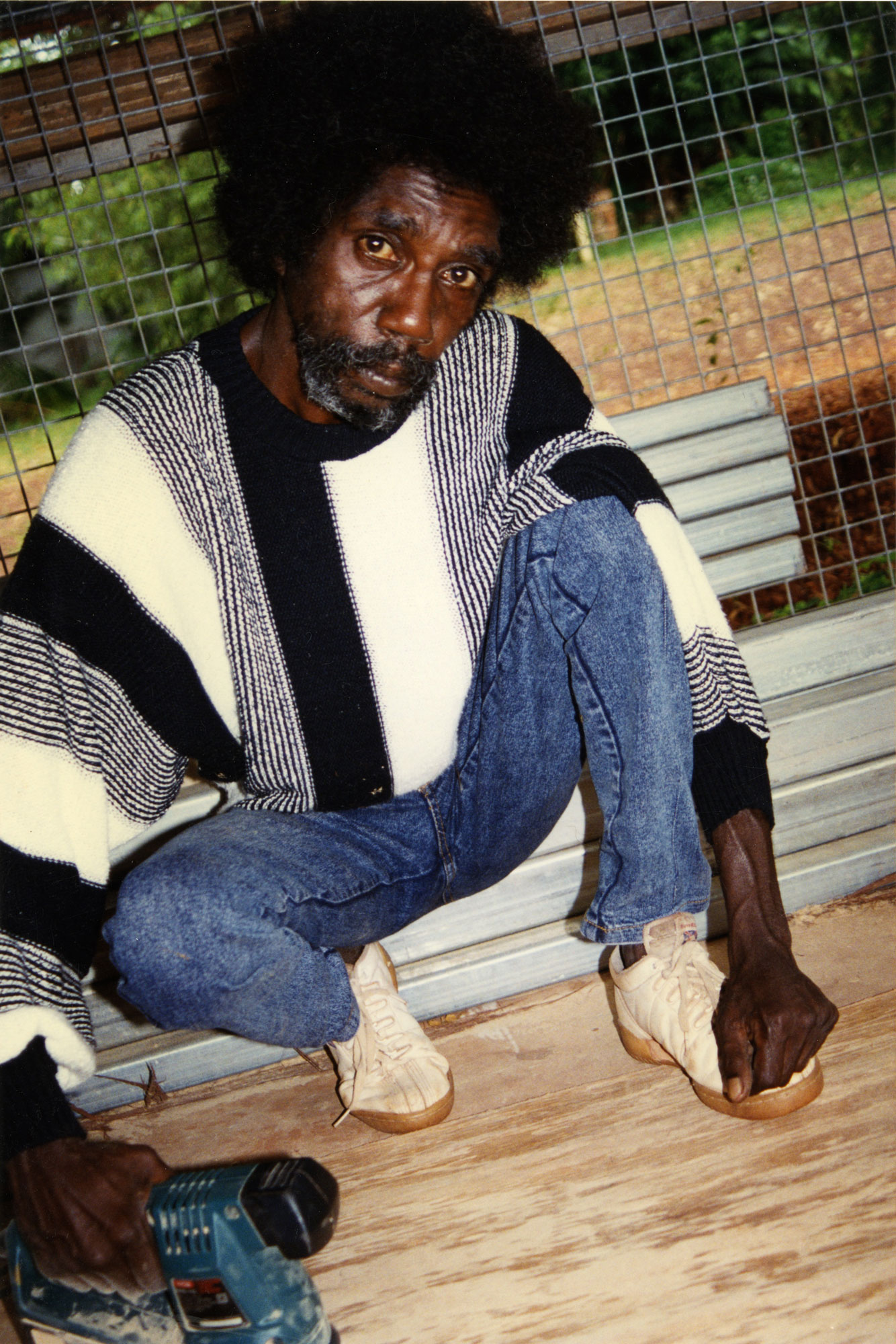
Clan
Rirratjiŋu
Artist Dates
Born 1957
Mawalan #2 Marika
The eldest son of Wandjuk Djuwakan Marika, Mawalan #2 Marika is considered the preeminent custodian of the site of Yalaŋbara, where the Djan’kawu first landed on their creation journey. An important leader in the fields of education, cultural maintenance and environmental protection, he paints only intermittently.

